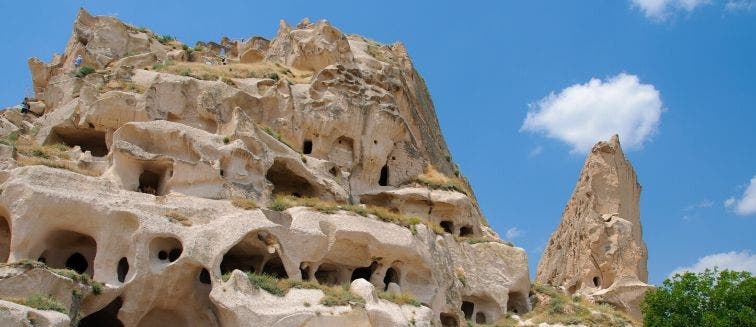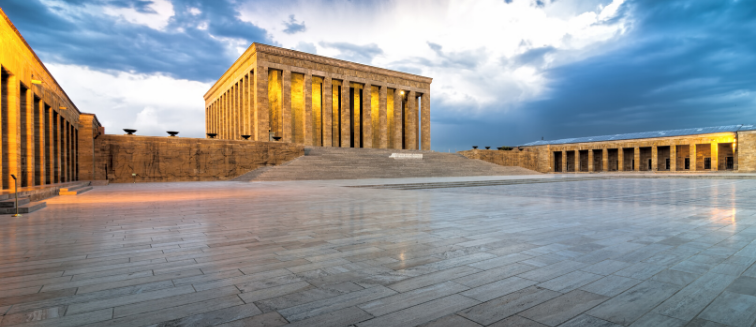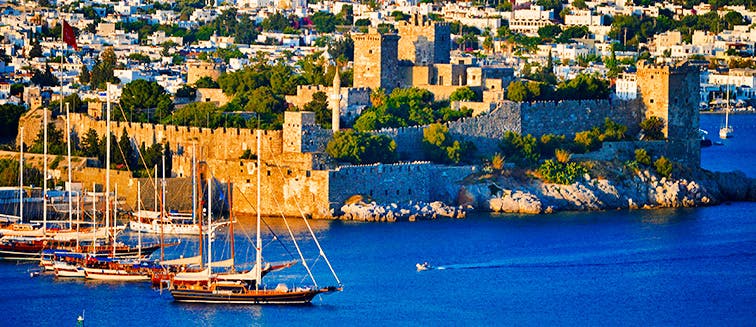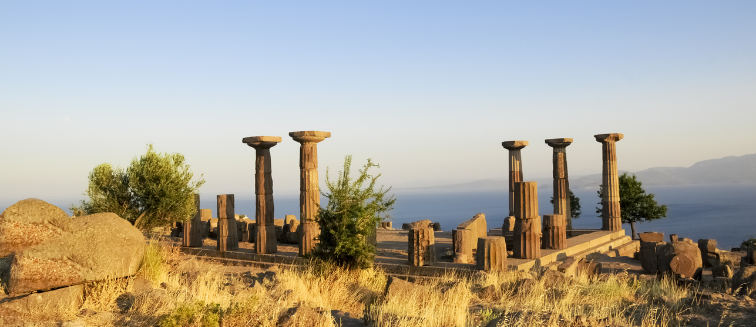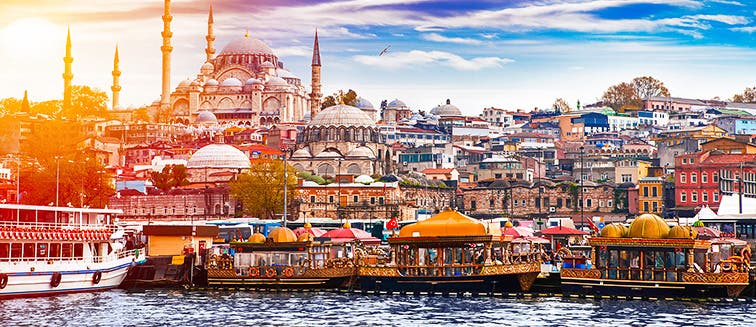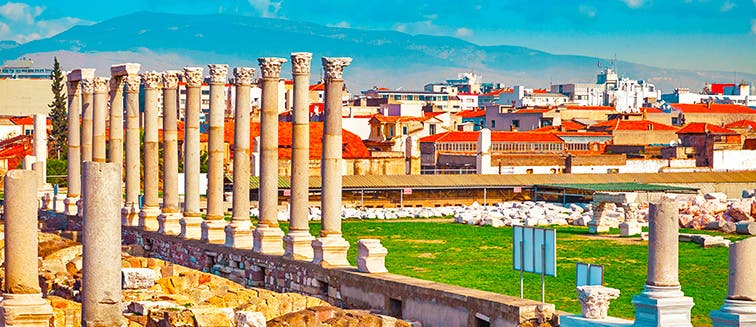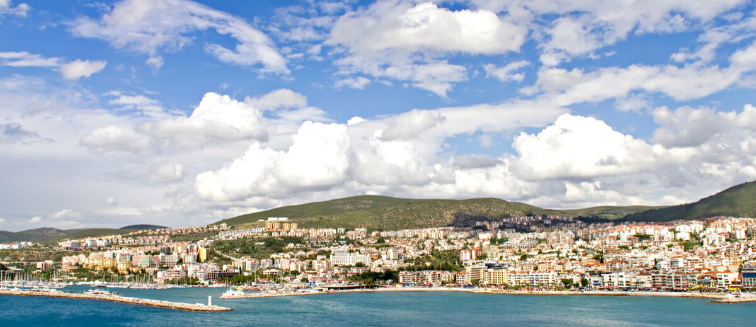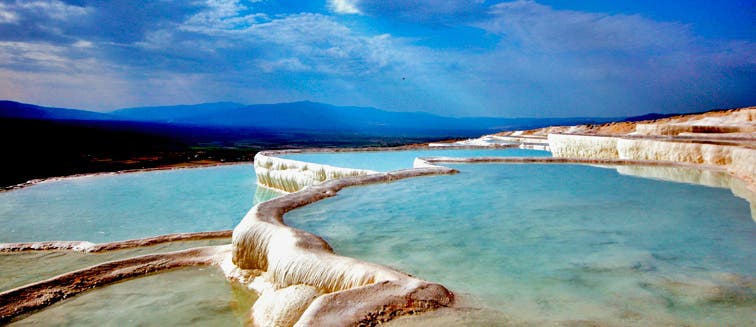Africa
Americas
Asia
Europe
Oceania
Holidays to Europe (103 available)
Albania(2)
Austria(11)
Baltic States(3)
Belgium(2)
Croatia(6)
Cyprus(1)
Czech Republic(8)
Denmark(2)
England(10)
Finland(2)
France(14)
Germany(11)
Greece(11)
Holland(2)
Hungary(9)
Iceland(6)
Ireland(7)
Italy(20)
Montenegro(1)
Northern Ireland(2)
Norway(7)
Portugal(14)
Scotland(4)
Slovakia(4)
Spain(13)
Sweden(1)
Switzerland(4)
Advisors hotline: +1 778-743-2337
Monday - Friday 9am - 9pm EST
Saturday - Sunday: 9 am - 6 pm EST
What to see in Turkey
Kaymakli Underground City
Tourist attractions Kaymakli Underground City
One of Cappadocia’s largest underground cities and most captivating attractions, the labyrinthine maze of subterranean caves and passages that make up Kaymakli Underground City offer a keyhole into the hidden world of Turkey’s ancient troglodyte communities. Thought to date back to Hittite times, it is thought to have housed more than 3000 inhabitants at its peak and, over the centuries, the underground complex has been expanded, spanning across 8 storeys deep underground.
Throughout the conflicts waged across Europe and Asia, persecuted communities, namely Christians, found shelter in this underground city and used it to hide safely from their persecutors. Visitors who take a trip to Kaymakli Underground City today, which is easily accessible from Göreme, can access only 4 levels but the effect is still breathtaking. Kaymakli is a masterpiece of early rock architecture, carved deep into the soft volcanic earth. Comprised within this mind-bending subterranean world are wineries, stables, dwellings, a church, kitchens and storage rooms, some of which are still used by locals of Kaymakli today.
Archaeologists have also uncovered an impressive tunnel system which links the underground city of Kaymakli with Derinkuyu, 9 kilometres away. If you visit Kaymakli Underground City you’ll find it to be well lit and fairly accessibility, making it less claustrophobic than over cave complexes in the region. Each of the four floors is organised around ventilation shafts and taking a guided tour of Kaymakli is the best way to learn about the different sections and the way of the life of its ancient inhabitants, who are thought to have abandoned the site in around the 14th-century, although Cappadocian Greeks may have used the caves intermittently to take refuge during waves of Ottoman persecution in the early 20th-century.
OUR BEST TRIPS TO KAYMAKLI UNDERGROUND CITY
YOU ALSO LIKE
Bhutan
2 Trips
India
15 Trips
Maldives
7 Trips
Nepal
5 Trips
Saudi Arabia
1 Trips
Sri Lanka
6 Trips
Turkey
7 Trips
United Arab Emirates
5 Trips
Jordan
8 Trips
Israel
Notify me when available
Armenia
Notify me when available
Uzbekistan
1 Trips
Oman
1 Trips
Lebanon
Notify me when available
Kazakhstan
Notify me when available
Kyrgyzstan
Notify me when available
Qatar
Notify me when available
Bahrein
Notify me when available
Cambodia
4 Trips
Thailand
11 Trips
Vietnam
8 Trips
Myanmar
Notify me when available
Indonesia
7 Trips
Malaysia
2 Trips
Philippines
5 Trips
Singapore
3 Trips
Laos
Notify me when available
China
5 Trips
Japan
10 Trips
Hong Kong
6 Trips
South Korea
5 Trips
Tibet
Notify me when available
Mongolia
Notify me when available
Taiwan
Notify me when available
Tourist attractions turkey
Points of interests
- Trips to Ankara
- Trips to Antalya
- Trips to Bodrum
- Trips to Çanakkale
- Trips to Cappadocia
- Trips to Ephesus
- Trips to Istanbul
- Trips to Izmir
- Trips to Kaymakli Underground City
- Trips to Konya
- Trips to Kusadasi
- Trips to Pamukkale
- Trips to Troy
Other Points of interests
- Trips to Abhaneri
- Trips to Abu Dhabi
- Trips to Agra
- Trips to Al Hofuf
- Trips to Al Ula
- Trips to Al-Hasa
- Trips to Alleppey
- Trips to Amber Fort
- Trips to Amritsar
- Trips to Anuradhapura
- Trips to Arabian Desert
- Trips to Bandhavgarh National Park
- Trips to Beruwala
- Trips to Bikaner
- Trips to Chennai
- Trips to Chitwan
- Trips to Colombo
- Trips to Dambulla Caves
- Trips to Dammam
- Trips to Delhi
- Trips to Dhiffushi
- Trips to Dubai
- Trips to Ella
- Trips to Everest
- Trips to Fatehpur Sikri
- Trips to Fuerte de Agra
- Trips to Galle
- Trips to Goa
- Trips to Ha'il
- Trips to Hegra
- Trips to Huraa Island
- Trips to Jaipur
- Trips to Jaisalmer
- Trips to Janakpur
- Trips to Jantar Mantar
- Trips to Jeddah
- Trips to Jodhpur
- Trips to Jubbah
- Trips to Kajuraho
- Trips to Kandy
- Trips to Kanha National Park
- Trips to Kathmandu
- Trips to Kerala
- Trips to Kochi
- Trips to Koggala
- Trips to Lumbini
- Trips to Maafushi
- Trips to Madain Saleh
- Trips to Madinah
- Trips to Madurai
- Trips to Mahabalipuram
- Trips to Malé
- Trips to Mandawa
- Trips to Matale
- Trips to Nagarkot
- Trips to Negombo
- Trips to Nuwara Eliya
- Trips to Palacio de Jaipur
- Trips to Paro
- Trips to Patan
- Trips to Pench National Park
- Trips to Periyar National Park
- Trips to Pinnawala
- Trips to Pokhara
- Trips to Pondicherry
- Trips to Punakha
- Trips to Rajasthan Desert
- Trips to Ranthambore
- Trips to Rishikesh
- Trips to Riyadh
- Trips to Seeduwa
- Trips to Sigiriya
- Trips to Tabuk
- Trips to Taj Mahal
- Trips to Thanjavur
- Trips to Thimphu
- Trips to Tiger's Nest
- Trips to Udaipur
- Trips to Varanasi
- Trips to Welligama
- Trips to Yala National Park
Countries Nearby
- Armenia Trips
- Bahrein Trips
- Bhutan Trips
- Cambodia Trips
- China Trips
- Hong Kong Trips
- India Trips
- Indonesia Trips
- Israel Trips
- Japan Trips
- Jordan Trips
- Kazakhstan Trips
- Kyrgyzstan Trips
- Laos Trips
- Lebanon Trips
- Malaysia Trips
- Maldives Trips
- Mongolia Trips
- Myanmar Trips
- Nepal Trips
- Oman Trips
- Philippines Trips
- Qatar Trips
- Saudi Arabia Trips
- Singapore Trips
- South Korea Trips
- Sri Lanka Trips
- Taiwan Trips
- Thailand Trips
- Tibet Trips
- Turkey Trips
- United Arab Emirates Trips
- Uzbekistan Trips
- Vietnam Trips
Trip Styles
